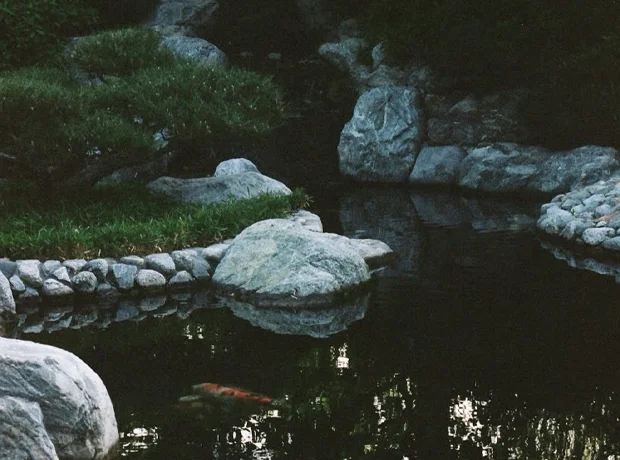
Ensuring longevity and stability in a new pond installation requires keeping the soil that makes up its sides and bottom in check. One key factor that plays a part in successfully doing this is the use of an anchor trench to secure the geomembrane pond liner.
Anchor trenches are an important part of any pond installation. Without them, you run the risk of your pond losing its shape, getting muddy and murky, and having unnecessary soil runoff into your crystal-clear waters.
Let’s take a closer look at anchor trenches and which trench may work best for your pond.
What Is An Anchor Trench
An anchor trench is a canal that is dug around the exterior perimeter of your pond installation. It is used as the main anchor point of your geomembrane pond liner so that everything stays in place once you begin to add water and vegetation to your installation.
They function by using gravity and friction as their main anchoring mechanisms. By digging the trench and adding the pond liner to the bottom beneath a healthy amount of soil, you create a secure hold on the pond liner, ensure a smooth and gentle slope into your pond, and mitigate the effects of erosion over time.
Related Article: Specialty Plastic Sheeting Conversion Calculator
Types Of Anchor Trenches
There are three main types of anchor trench: square, trapezoidal, and v-shaped. Depending on the terrain and the type of soil in your area, one may be a better option than the others.
Square Anchor Trench
Square anchor trenches feature 90-degree angles, where the walls of the trench meet perpendicularly with the floor. This is the most common type of anchor trench, and generally fairs well when under rockier terrain.
If there is a high volume of silt or sand in your anchor soil, however, a square anchor trench may fail to secure the geomembrane in some places.
Trapezoidal Anchor Trench
Instead of a 90-degree angle, trapezoidal anchor trenches utilize more obtuse angles to help better contain the anchor soil.
While they have similar performance to square trenches when it comes to rockier soil, trapezoidal anchor trenches have a distinct advantage when used with finer textures, as the obtuse angles lead to fewer shearing planes. This means that the silty soil doesn’t break up as easily, which in turn better secures the pond lining.
V-Shaped Anchor Trench
As its name suggests, a v-shaped anchor trench utilizes a distinctive “V” for its canal.
Instead of consisting of a trench floor and two walls, this type of trench replaces the trench floor with an acute angle that “pinches” the pond liner when filled with soil. While the v-shaped trench underperforms in sandy and rocky environments compared to other anchor trenches, it serves as a great option when working with clay, as the lack of a floor creates fewer shearing planes for this type of material.
Which Geomembrane Should I Use?
Geomembranes come in a variety of options, and depending on your unique situation, the right material for your project may vary. Linear low-density polyethylene is a great option for budget-conscious buyers, thanks to its lower cost and high strength index.
That said, we’d recommend going with something more like reinforced polypropylene for a pond environment, which is purpose-built for water containment. And if your pond is going to incorporate moving water elements, woven coated geomembrane polyethylene excels in its ability to direct water. Don’t forget to install some drain pipe debris netting to help capture debris and prevent it from entering stormwater systems.
Related Article: Heavy Duty Geomembrane Liners and Covers
Find The Right Anchor Trench Pond Liners With Americover
As an Americover customer, you will receive the personalized support of a dedicated account manager to simplify the ordering process and ensure the best solution for every one of your projects.
Our friendly, knowledgeable staff is here to answer your questions and fulfill orders Monday-Friday from 7 a.m. to 4:30 p.m. Pacific Standard Time. For more information or a free sample, call us at 760-388-6294 or visit our Contact Us page.
